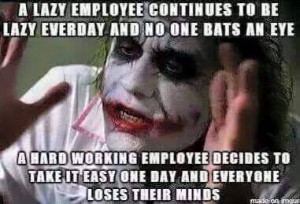#2. They Use the Smell of Food to Sell You More Than Food

commons.wikimedia.org
Let’s be honest, most of us wouldn’t be able to identify Swedish food of any sort if it wasn’t for IKEA’s iconic Swedish marketplace. In 2012, the very height of their pre-horse-meat-controversy golden age, the multidimensional retailer sold 150 million of their signature meatballs. That’s roughly 4,200 metric tons of Seabiscuit.

Thomas Northcut/Digital Vision/Getty Images
Shoutout to delicious Swedish horses.
But the food isn’t there to promote cultural awareness only (or at all). IKEA knows the fastest way to our wallets is through our stomachs, and the statistics back that up. The food, and even the smell of the food, is simply a gateway drug that leads to you spending your entire paycheck on household furnishings that you and your significant other will expend untold weekend hours building and fighting over until the habit ultimately tears you asunder.
Sure, “scent marketing” is a psychological sensory weapon many stores have used for a long time now. You can avert your eyes, but you can’t stop inhaling the sweet aroma of cinnamon buns and such. Few companies wield this weapon quite as effectively as IKEA, though. Not content to let the scent of sizzling thoroughbred just waft through the aisles unassisted, they actually pump the smell of cooked meat into their kitchen display sections, just as a reminder of all the delicious things you could be cooking with that pan you’ve been eyeing for no discernible reason.

IKEA.com
His name is Trovardig!
Those meatballs you damn well know you’re buying aren’t just going to cook themselves, right? Besides, who drives 20 minutes just to buy meatballs? You’d look like a crazy person if you didn’t pick up a little cookware while you’re all the way out there.
Plus, Ikea deliberately plants their restaurants and cafes smack dab in the middle of their maze. The constant availability of food keeps us satiated, energized, and, most importantly, happy. Happy people are slightly less vigilant and more likely to spend money on plastic wood.

IKEA.com
Assembling this will destroy you.
It’s not until you furnish your studio apartment with IKEA goods, only to find that it smells less like delicious sausage and more like packing peanuts, that the reality of what just happened sets in.
#1. “The IKEA Effect” Makes All the Effort Seem Worth It

Cancan Chu/Getty Images News/Getty Images
IKEA has a reputation for selling furniture that comes with the kind of instructions you’d expect to see if you were building an elaborate bomb or entry-level robot. Everyone knows that, but for some reason, countless first-time customers flock to the IKEAs of the world every single day to dip their toes in the punishing waters of extreme self-assembly.

IKEA.com
You do not need this shit.
Even more mind-blowing is that, conceivably, a sizable portion of the IKEA customer base consists of people who are returning a second and third time (at least), despite having firsthand knowledge of the devastating effects a decision like that will have on their sanity and free time.
It seems insane, but there’s science behind how and why it happens. See, if and when you actually finish building that Jerker, you’ll love it and appreciate it way more because you put it together.
Even if you did a crappy job assembling it and it falls apart within a few months, you’ll still take pride in that useless piece of trash. Why? Because we’re all narcissistic shitheads like that. Take your children, for example.

Darrin Klimek/Digital Vision/Getty Images
Ugh.
They might be (and almost certainly are) just as annoying or even more obnoxious than anybody else’s kids, but you still like them the most because you made them.
IKEA has taken this concept to staggering new heights, as evidenced by the fact that the idea of do-it-yourself-products-as-marketing-tools is actually referred to in some circles as “The IKEA Effect.”

Kevin Frayer/Getty Images News/Getty Images
The first symptom is unconsciousness.
Coming away from any task with the sense that you’ve accomplished something tangible and real is going to feel like a win. Again, take your shitty kids for example: they might instinctively kick and scream at the sight of vegetables, but if you ask them to participate in preparing and cooking a meal with those vegetables, they’ll probably eat them just because they’re curious how this thing they helped build will taste.
People will always like stuff they put their work and time into, even if it’s shitty. IKEA exploits this better than anyone by making you work the hardest for their products. It’s a nightmare while you’re in the midst of the project, but once you’re finished, you feel like you’ve done something not everyone has the ability to do. You saw that mountain, you climbed it, and you’ve got a rickety-ass bookshelf to prove it.
Congratulations, master builder!


































































Recent Comments